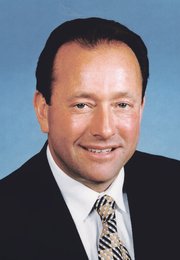How a Growing Economy Affects Financing for Apparel Manufacturers
Finance
As of Friday, August 1, 2014
With interest rates still hovering in single-digit territory, the cost of borrowing money should be cheap, cheap, cheap. But it’s more than low interest rates that determine how much apparel manufacturers pay for a loan.
Factors and banks crunch a variety of numbers into their calculators before they come up with the interest rate a borrower is charged. Some of the formula comes from how much inventory an apparel maker is carrying or what kinds of retailers manufacturers have as their clients.
One thing hasn’t changed. Financially strong companies have a certain advantage over start-ups with no business history. And rates are still variable as the retail sector struggles with more competition from e-commerce.
We asked several financial factors to give us a glimpse into how they view the credit environment for clothing makers.
The economy has been slowly improving over the last few years. How has this affected the interest rates that factors are charging for apparel manufacturers’ accounts receivables, and are factors now willing to take on more or less risk in financing?
Sydnee Breuer, Senior Vice President, Business Development, Rosenthal & Rosenthal
When the economy is improving or doing well, lenders in general—and factors, included in that group—should be and are willing to take on more risk.
As the client portfolio performs better in improving economies than in weaker ones, the potential loan losses go down. So there is more appetite to take on risk. There are also more opportunities for clients to need help for “good” reasons—increasing sales, expanding product lines, buying new labels or businesses, etc.—rather than “bad” reasons—losses, shutting down divisions, etc. However, factors still need to be prudent about the risk they take. Even in a strong economy, companies can still go out of business.
Although it is a competitive environment, generally interest rates are primarily based on the individual client’s financial condition and performance.
Mitch Cohen, Western Regional Manager, CIT Commercial Services
Interest rates continue to decline as more competitors enter the market. With regards to the industry changing its risk appetite, I would say that it remains consistent from prior periods.
Ron Garber, Executive Vice President and Regional Manager, First Capital Western Region
Our challenge as factors during these times of a healthier economy has brought more competition into our traditional core industries. Potential factoring candidates are rethinking their need for a full factoring facility with the goal of reducing costs by seeking out cheaper bank funding.
If an existing factoring client has beefed up its balance sheet over the past few years, they are in a position to attract multiple offers from top-notch banks that could reduce their borrowing costs anywhere from 150 to 250 basis points. Additionally, they possibly could bring in-house the credit-and-collection function and save the factoring commission.
Most apparel manufacturers today sell to a select group of large, creditworthy accounts. They have access to an array of economical credit insurance enhancements, thereby shielding them from potential catastrophic losses.
The factoring world within itself remains very competitive. Banks are seeking to expand their business into the middle market, and manufacturers are feeling more confident to go it alone. With that in mind, the only direction interest rates can go is down.
Still, opportunities remain available for the independent, non-bank-owned factor that can put together a factoring and financing package that is flexible, timely and less structured. If interest cost is tantamount, then the independent can partner up with a major bank, thereby offering the best of both worlds.
In conclusion, the factoring business remains a viable mechanism for working capital in its core industries. As long as the economy keeps humming along, it will face challenges for market share. By adhering to a disciplined risk policy, factors will survive and be in position to expand their businesses when the banks predictably contract during the next economic downturn.
Rob Greenspan, President, Greenspan Consult Inc.
Interest rates remain low, and this provides manufacturers with the ability to borrow money against their accounts receivables or inventories at historically low rates.
It doesn’t seem that long ago when the going rate was prime plus 3 percent or even higher. The prime rate is still a common index used to calculate interest charges, but today the prime rate is around 3.25 percent as compared to years ago when the prime rate was in the 8 percent to 10 percent range and even higher.
The “percentage plus” amount varies by many factors, but today it can range anywhere from prime plus 0 percent to 3 percent and higher. The financially strong companies typically get the better (lower) rates for borrowing.
Another change that has occurred during the past decade has been for financially sound companies to be able to borrow at LIBOR (London InterBank Offered Rates). This is an index used for shorter-term loans that range from 30 to 90 days. Recently, the 30-day LIBOR rate was .16 percent and the 90 day was .23 percent.
Banks and factors, if their client qualifies, can charge interest at LIBOR plus 2 percent to 3 percent. Therefore, their borrowing rate is now much less expensive than a “prime plus” loan—by almost 50 percent in some cases. Instead of borrowing at 5 percent to 6 percent, financially strong companies might be able to borrow at 2.25 percent to 3.25 percent.
Kee H. Kim, President and Chief Executive, Finance One Inc.
Factors traditionally determine interest rates based on the financial strength of a client’s business and principal’s experience and character. Despite overall improvements in the economy, the apparel industry is yet to experience a significant or sustainable growth. With sluggish sales in both retail and wholesale sectors, many apparel manufacturers and wholesalers are financially struggling without a clear indication of foreseeable recovery. The interest rates have gone down in recent years, but this decrease has been attributed to increased competition among factors as well as banks.
With bankruptcy filings by a handful of well-known retailers in just the past couple of years—Loehmann’s in December 2013, Dots in January, Ashley Stewart in March, Coldwater Creek in April and Love Culture in July—risk management has become more important than ever for factors.
Factors are hard-pressed to maintain profit levels with competitive pressure on pricing and increasing write-offs from the retailers’ continued financial difficulty. Since interest rates are already low at this time, I believe that rates are unlikely to go any lower than the current level.
Sunnie Kim, Chief Executive and President, Hana Financial
We believe rates in the marketplace have been steady even though there have been incremental improvements in the general economy. Unfortunately, the apparel and textile industries have not enjoyed the same level of economic progress as some other parts of the economy, and that may be one of the factors in keeping rates from fluctuating. Actually, the main determinant of movement in our portion of the economy seems to be driven by competition more than any other element.
The level of risk a financial factor or any other lender is willing to take remains subjective. Because each decision is based upon many considerations, in the final analysis each deal will stand on its own merit combined with the risk tolerance of that particular firm.
Robert Meyers, Managing Director for the West Coast, Bibby Financial Services
For well-established and growing brands, it has never been better to be a borrower. Interest rates are at their lowest levels in the bank and alternative-receivable finance markets as lenders strive to retain clients.
Due to inconsistent consumer demand over the past 12 months, our clients have been reluctant to seek additional capital providers as future demand is still cloudy. We are even seeing reductions for factoring rates in the traditional factoring market for small- and medium-sized brands that have more access to capital than ever before. As the number of receivable-financing companies increases, demand remains stagnant or below average. We are seeing a reduction in cost to borrowers.
When it comes to risk, in situations where growth is expected nationally year over year, finance companies have had to stretch beyond traditional ratios across all types of collateral values. We are seeing more seasonal over advances and cash flow stretch lends where traditional bank/asset-based lenders wouldn’t have ventured.
Given that dynamic of increased risk, factors are forced to stretch even farther with advance rates and ratios and are less reliant on financial performance, helping brands have access to more capital than ever before.
And if your lender borrows at Fed rates, the amount they pay for money is nominal. Today the cost of money is far lower than it has ever been.
With lower interest rates, banks’ and factors’ profit margins are being squeezed. This can cause them to be more selective to whom they give the best deals. Typically, the companies that get the LIBOR rates along with low percentage points added to the index are the ones that have less risk.
Most lenders want to be rewarded for the increased risk they take. If you are a highly leveraged company, or you are selling to high credit-risk retailers, or even if you carry some excess inventory, which causes a slower turn of money, you might be deemed as a higher risk and have to pay more for your money. The less risk the lender assumes, the lower your cost of money.
Don Nunnari, Regional Manager, Merchant Factors Corp.
We didn’t raise interest rates during the recession. Our interest rates are among the most competitive in the industry.
Our risk appetite and our full commitment to our core apparel business remain very strong and has never wavered. We are seeing more opportunities to factor apparel companies that need typical advances against their accounts receivables and instances where companies need additional financing for inventory purchases or seasonal over advances.
We are always available to meet these prospects and learn about their business and their financing requirements. Our goal is to find a way to do the deal if it makes sense. It always has and always will start with the people looking for the financing. If we believe in the people, the deal usually gets done.
Dave Reza, Senior Vice President, Milberg Factors
Interest-rate indexes such as prime and LIBOR have been stable for some time. The pricing above (or in some cases below) these indexes reflect both the market conditions and competitive environment. After the economic meltdown in 2008, interest-rate spreads rose. Suffice to say, as the recovery has progressed and financial markets stabilized, rates have fallen.
While the market conditions will reward or impact all borrowers, specific deal rates still reflect the underlying transaction risk as perceived by a lender. To the extent the risk is higher, the spread above prime or LIBOR will increase (or there will be less below prime and LIBOR pricing). Of course, in an improving economy, competitive pressures will allow all borrowers to get a better rate than their financial standing may warrant.
While pricing has fallen overall, I believe that most lenders, especially those servicing the core apparel/textile markets, are not taking on as much unsecured/under-secured risk as they did pre-2008.
Of course, having said that, a good factor or bank is always willing to accept more risk with principals who have demonstrated a high degree of integrity and good operating skills.
Paul Schuldiner, Managing Director of Business Development, King Trade Capital
This has been, and, in the short term, will continue to be, a borrower’s market with respect to rates and, unfortunately, sometimes structure.
There is tremendous liquidity available in the credit markets. That said, it is imperative for an apparel company to align itself with a factor as well as a purchase-order financier that is highly experienced in the industry and who understands the seasonality as well as the business cycle.
As we have seen throughout history, cycles can change quickly. It is vital to have a financing source that provides not only capital but consultative structuring advice for the apparel entrepreneur, whether it be in good times or when there is a downturn.
Gary Stein, Vice President/Credit Manager, Prime Business Credit Inc.
With the myriad of positive reports recently, ranging from an eight-year low in jobless claims to a spike in mortgage activity, we are cautiously optimistic approaching the second half of 2014. Durable-goods orders and retail performance continue to outpace projections. However, many small-business operators are reluctant to take on new debt, citing concerns over creditworthiness and cost of credit.
As the retail market’s dynamics continue to improve, it stands to reason that we will be presented with opportunities to finance more robust and aggressive deals, without compromising credit-quality protocol. The economy still has a lot of room to grow, and we believe our industry will react in kind. We are closely watching the Fed, but we are not anticipating any rate hikes until more stable and sustainable improvement is shown.
The key to success lies in seeking out these qualified candidates and providing our best product in this highly competitive market.
Ken Wengrod, President, FTC Commercial Corp.
While the economy has slowly improved over the last two years, smart companies have maximized their revenue by shaving off unnecessary expenses and improving productivity and margins. These operators have made their companies financially stronger and less dependent on the whims of lenders.
Factors charge interest rates according to risk and reward. Therefore, the more leveraged a company, the higher the borrowing costs. The same holds true for customers’ credit quality. By and large, default rates at retail have been steadily declining.
Factors’ risk appetite has improved due to the general credit stability of retail customers and because clients are running tighter operations. Factors are still focusing on the character of the owners, whether they have the right merchandise (orders on hand) along with proper margins.
They also like to see streamlined operations with the ability to execute. The companies that fall into these categories will have lenders supporting their growth and accelerating the companies’ working capital.











